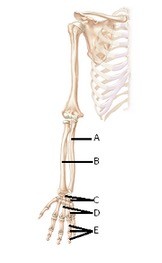During exercise, hemoglobin releases more oxygen to active skeletal muscles than it does when those muscles are at rest. Why?
A) Decreased temperature and increased pH generated by active skeletal muscles cause hemoglobin to release more oxygen during exercise than when the muscles are at rest.
B) Decreased temperature and decreased pH generated by active skeletal muscles cause hemoglobin to release more oxygen during exercise than when the muscles are at rest.
C) Increased temperature and decreased pH generated by active skeletal muscles cause hemoglobin to release more oxygen during exercise than when the muscles are at rest.
D) Increased temperature and increased pH generated by active skeletal muscles cause hemoglobin to release more oxygen during exercise than when the muscles are at rest.
E) Decreased temperature and increased oxygen generated by active skeletal muscles cause hemoglobin to release more oxygen during exercise than when the muscles are at rest.
Answer: C
You might also like to view...
At which gestational age do basic heart structures, major blood vessels, lymph nodes, and ducts form?
A) month 6 B) month 8 C) month 4 D) month 7 E) month 2
 The figure illustrates bones of the right upper limb. What does "A" represent?
The figure illustrates bones of the right upper limb. What does "A" represent?
A. Phalanges B. Ulna C. Radius D. Carpals E. Metacarpals
A newborn infant may have some defense against disgestive and respiratory distubances because of IgA obtained from its mother's____
Fill in the blank(s) with the appropriate word(s).
The temporomandibular joint is the only mobile joint between skull bones.
Answer the following statement true (T) or false (F)